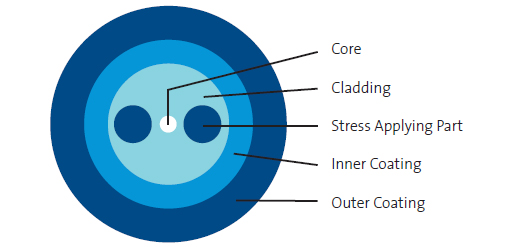Principle of Polarization-Maintaining Fiber
Principle of Polarization-Maintaining Fiber
Now optical fiber is widely used in our life, but due to the ordinary optical fiber has no way to manufacture into completely symmetrical optical fiber, and optical fiber in the actual application will be subjected to mechanical stress becomes asymmetric, thus producing birefringence phenomenon, so the polarization state of the light in the transmission of ordinary optical fiber will be completely irregular changes. Bias-preserving optical fiber can ensure that the polarization state of light in the transmission process remains unchanged, improving the coherent signal-to-noise ratio, and is widely used in aerospace, aviation, navigation, industrial manufacturing technology and communications and other areas of the national economy.
What is Polarization-Maintaining Fiber?
Polarization-maintaining (PM) fibers are special optical fibers that ensure that the linear polarization of transmitted light remains constant. Theoretically, the optical fiber is round-centered and should not produce birefringence, and the polarization state of the light should not change in the propagation process. However, in practice, ordinary optical fiber in the production process, will be subject to external forces, such as reasons, so that the fiber uneven thickness or bending and other situations, so that the optical fiber birefringence phenomenon. When the optical fiber is subjected to any external interference, such as wavelength, bending degree, temperature and other influencing factors, the polarization state of the light becomes disordered when transmitted in the conventional optical fiber. The application of a bias-preserving fiber is a solution to this problem of polarization state change, but instead of eliminating the phenomenon of birefringence in optical fibers, it removes the effect of stress on the polarization state of the incident light by creating a stronger birefringence by designing in the geometry of the fiber. During the drawing process of a polarization-preserving optical fiber, when the line-polarized light is transmitted along one characteristic axis of the fiber, part of the optical signal couples into the other characteristic axis that is perpendicular to it, which ultimately results in a decrease in the polarization extinction ratio of the outgoing polarized light signal, thus affecting the birefringence effect.




